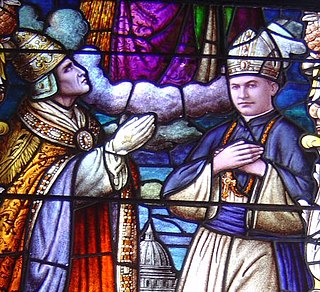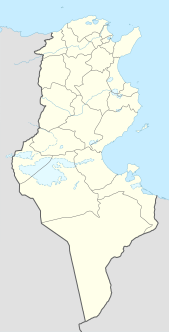Voncariana (in Latin: Dioecesis Voncarianensis) was an ancient Roman–Berber civitas in the province of Mauretania Caesariensis. [1] Its stone ruins are located at Boghasi in modern Algeria. [2]

The Roman Empire was the post-Roman Republic period of the ancient Roman civilization. Ruled by emperors, it had large territorial holdings around the Mediterranean Sea in Europe, North Africa, the Middle East, and the Caucasus. From the constitutional reforms of Augustus to the military anarchy of the third century, the Empire was a principate ruled from the city of Rome. The Roman Empire was then ruled by multiple emperors and divided in a Western Roman Empire, based in Milan and later Ravenna, and an Eastern Roman Empire, based in Nicomedia and later Constantinople. Rome remained the nominal capital of both parts until 476 AD, when Odoacer deposed Romulus Augustus after capturing Ravenna and the Roman Senate sent the imperial regalia to Constantinople. The fall of the Western Roman Empire to barbarian kings, along with the hellenization of the Eastern Roman Empire into the Byzantine Empire, is conventionally used to mark the end of Ancient Rome and the beginning of the Middle Ages.

Berbers, or Amazighs are an ethnic group of several nations indigenous mostly to North Africa and in some northern parts of Western Africa.

The Roman provinces were the lands and people outside of Rome itself that were controlled by the Republic and later the Empire. Each province was ruled by a Roman who was appointed as governor. Although different in many ways, they were similar to the states in Australia or the United States, the regions in the United kingdom or New Zealand, or the prefectures in Japan. Canada refers to some of its territory as provinces.
Voncariana was a former was a Christian diocese of the Roman Catholic Church. [3] [4] [5] The site of the cathedra of Voncariana is unknown.

The word diocese is derived from the Greek term dioikesis (διοίκησις) meaning "administration". Today, when used in an ecclesiastical sense, it refers to the ecclesiastical district under the jurisdiction of a bishop.

A cathedra or bishop's throne is the seat of a bishop. It is a symbol of the bishop's teaching authority in the Catholic Church, the Orthodox Church, and the Anglican Communion churches. Cathedra is the Latin word for a chair with armrests, and it appears in early Christian literature in the phrase "cathedrae apostolorum", indicating authority derived directly from the apostles; its Roman connotations of authority reserved for the Emperor were later adopted by bishops after the 4th century. A church into which a bishop's official cathedra is installed is called a cathedral.
Only one bishop from ancient Voncariana is known, Victor, who was among the Catholic bishops who attended a synod in Carthage in 484 AD called by the Vandal King Huneric . [6]
A bishop is an ordained, consecrated, or appointed member of the Christian clergy who is generally entrusted with a position of authority and oversight.

Classical antiquity is the period of cultural history between the 8th century BC and the 5th or 6th century AD centered on the Mediterranean Sea, comprising the interlocking civilizations of ancient Greece and ancient Rome known as the Greco-Roman world. It is the period in which Greek and Roman society flourished and wielded great influence throughout Europe, North Africa and Western Asia.
Huneric or Hunneric or Honeric was King of the Vandal Kingdom (477–484) and the oldest son of Genseric. He abandoned the imperial politics of his father and concentrated mainly on internal affairs. He was married to Eudocia, daughter of western Roman Emperor Valentinian III (419–455) and Licinia Eudoxia. The couple had one child, a son named Hilderic.
Voncariana survives as a titular bishopric. The current bishop is Victor Antonio Tamayo Betancourt, auxiliary bishop of Barranquilla.
A titular bishop in various churches is a bishop who is not in charge of a diocese. By definition, a bishop is an "overseer" of a community of the faithful, so when a priest is ordained a bishop, the tradition of the Roman Catholic and Orthodox churches is that he be ordained for a specific place. There are more bishops than there are functioning dioceses. Therefore, a priest appointed not to head a diocese as its diocesan bishop but to be an auxiliary bishop, a papal diplomat, or an official of the Roman Curia is appointed to a titular see.
Victor Antonio Tamayo Betancourt is a Roman Catholic, Colombian clergyman and auxiliary bishop in Barranquilla and titular bishop of Voncariana in North Africa.

Barranquilla is the capital district of Departamento del Atlántico located near the Caribbean Sea and it is the largest city and port in the northern Caribbean Coast region of Colombia, with a population of 1,232,766 as of 2018, which makes it Colombia's fourth most populous city after Bogotá, Medellín and Cali.






